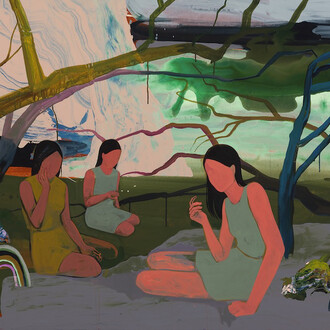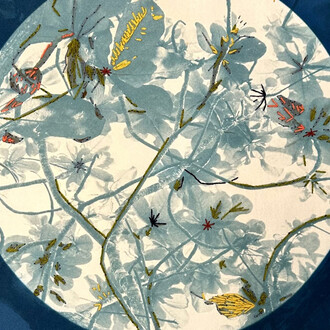Two years in the making, Everyday heaven is a transhistorical exhibition about rural America and specifically rural Wisconsin. The presentation brings together two unlikely, yet perfectly paired, artists — Rafael Francisco Salas (b. 1973) and Charles Van Schaick (1852-1946).
The photographer Charles Van Schaick lived and worked in Black River Falls, Wisconsin for 60 years during the late 1800s and early 1900s. He gained international recognition with the publication of the book, Wisconsin Death Trip by Michael Lesy (1973). The book, essentially Lesy’s PhD thesis, pairs Van Schaick’s deep archive of photographs (5,700 extant glass plate negatives) with area newspaper accounts that often describe illness, mayhem, farm accidents, and suicides. The book represented an interruption to the conventions of academic, historic research, as it painted a selective and less-mediated view of a specific place, assembled from primary source materials. Portrait Society worked with the Wisconsin Historical Society on selecting and printing the images in 2015 for a previous exhibition.
Rafael Francisco Salas grew up in rural Wisconsin and now lives in Ripon, WI where he is a professor of art at Ripon College. Salas has established an idiosyncratic practice that examines the conflicts and beauty of rural Wisconsin. His paintings explore the history of colonization, agriculture, and his own family’s story of seasonal farming and labor. This new body of work is centered around the theme of the county fair. Often softly lit and seeming to take place at sunrise or after sunset, the paintings’ melancholic atmospheres underscore the contemplation of shifting rural values. The current polarization of what is often referred to as “America’s Heartland” appears in images of isolated figures, strolling mariachi musicians, farm kids with livestock, and the accoutrements of county fairs.
Van Schaick’s photographs, both starkly realist in their formalities as well as theatrical in the pageantry of individuals commissioning a rare studio portrait, bookend Salas’ work perfectly. Both artists cross the historic divide of time and place to insist on certain rural truths — that the land was cultivated and lives were lived in consort with diverse populations who co-existed with dignity. Both bodies of work linger in an emotional terrain where temporality, fading light, failing emulsion, and the intrusion of pixelated passages suggest the most elusive human condition -- our suspension in time.
Together, the artwork of Salas and Van Schaick contradict assumptions about what it means to live in rural America, who can lay claim to its identit(ies), and how poetry and history can interweave to create a mysterious and haunting record of where we live.












